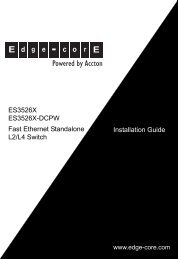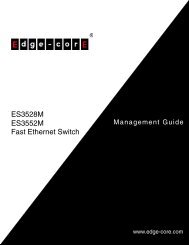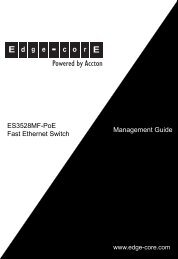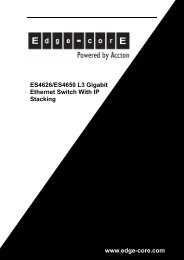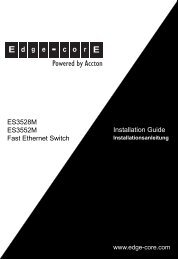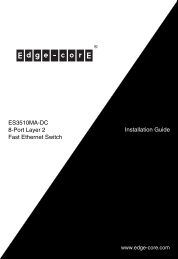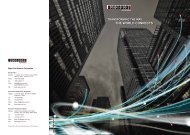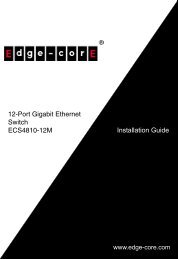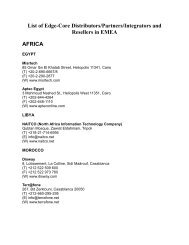Installation Guide ECS5510-48S 48-Port 10G Ethernet ... - Edge-Core
Installation Guide ECS5510-48S 48-Port 10G Ethernet ... - Edge-Core
Installation Guide ECS5510-48S 48-Port 10G Ethernet ... - Edge-Core
You also want an ePaper? Increase the reach of your titles
YUMPU automatically turns print PDFs into web optimized ePapers that Google loves.
CHAPTER 3 | Making Network Connections<br />
Cable Labeling and Connection Records<br />
CABLE LABELING AND CONNECTION RECORDS<br />
When planning a network installation, it is essential to label the opposing ends of<br />
cables and to record where each cable is connected. Doing so will enable you to<br />
easily locate inter-connected devices, isolate faults and change your topology<br />
without need for unnecessary time consumption.<br />
To best manage the physical implementations of your network, follow these<br />
guidelines:<br />
◆<br />
◆<br />
◆<br />
◆<br />
◆<br />
◆<br />
◆<br />
◆<br />
Clearly label the opposing ends of each cable.<br />
Using your building’s floor plans, draw a map of the location of all networkconnected<br />
equipment. For each piece of equipment, identify the devices to<br />
which it is connected.<br />
Note the length of each cable and the maximum cable length supported by<br />
the switch ports.<br />
For ease of understanding, use a location-based key when assigning<br />
prefixes to your cable labeling.<br />
Use sequential numbers for cables that originate from the same equipment.<br />
Differentiate between racks by naming accordingly.<br />
Label each separate piece of equipment.<br />
Display a copy of your equipment map, including keys to all abbreviations at<br />
each equipment rack.<br />
– 53 –





